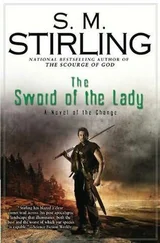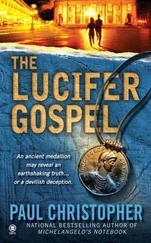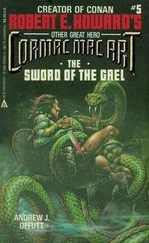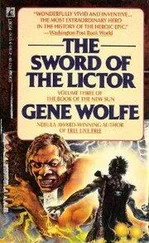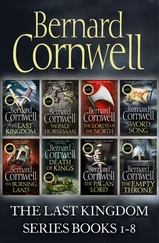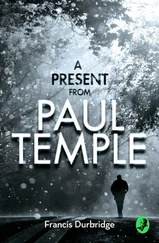Paul Christopher - The Sword of the Templars
Здесь есть возможность читать онлайн «Paul Christopher - The Sword of the Templars» весь текст электронной книги совершенно бесплатно (целиком полную версию без сокращений). В некоторых случаях можно слушать аудио, скачать через торрент в формате fb2 и присутствует краткое содержание. Жанр: Триллер, на английском языке. Описание произведения, (предисловие) а так же отзывы посетителей доступны на портале библиотеки ЛибКат.
- Название:The Sword of the Templars
- Автор:
- Жанр:
- Год:неизвестен
- ISBN:нет данных
- Рейтинг книги:3 / 5. Голосов: 1
-
Избранное:Добавить в избранное
- Отзывы:
-
Ваша оценка:
- 60
- 1
- 2
- 3
- 4
- 5
The Sword of the Templars: краткое содержание, описание и аннотация
Предлагаем к чтению аннотацию, описание, краткое содержание или предисловие (зависит от того, что написал сам автор книги «The Sword of the Templars»). Если вы не нашли необходимую информацию о книге — напишите в комментариях, мы постараемся отыскать её.
The Sword of the Templars — читать онлайн бесплатно полную книгу (весь текст) целиком
Ниже представлен текст книги, разбитый по страницам. Система сохранения места последней прочитанной страницы, позволяет с удобством читать онлайн бесплатно книгу «The Sword of the Templars», без необходимости каждый раз заново искать на чём Вы остановились. Поставьте закладку, и сможете в любой момент перейти на страницу, на которой закончили чтение.
Интервал:
Закладка:
“You know Corvo?” Holliday asked.
“Do I know Corvo! Of course! I was born there! Corvo is one cattle, a big fat brown one with udders like Scotland bag flutes. Lying down in the grass. Looking out at the ocean, chewing grass. Waiting for the milk. That is Corvo. Maybe one goat, as well.”
“Are there any stories of treasure?” Holliday asked.
“Sure! Sure!” nodded Tavares. “Moby Dick!”
“The whale?”
“Yes, of course. It was written in the book about Corvo. The courage of her men. ‘Call me Ishmael,’ yes? There was a statue. A man with a finger pointing west to Boston, the Holy Virgin. A whaler. Who knows? A statue and a pot of gold coins. Very old. Phoenicia, yes? You know it?”
“You’re kidding, right?” Holliday said.
Phoenicia was the ancient name for Canaan. Phoenician coins had been found in the old foundations of Castle Pelerin. It was too much of a coincidence. Myths turned to reality, legend to fact, like Schliemann discovering Troy.
“No! No! True, swear to God! Coins. Found in fifteenth century by a priest named Gao, I think. Ponta do Marco, the very edge of the world! I will take you there!”
Bless you, Uncle Henry, Holliday thought. Somehow he’d managed to make the right choice; the odyssey continued.
The weather worsened with each passing hour. The dark smudge of clouds staining the western horizon became a black, roiled wall of thunderclouds, their flattened undersides stretched out like hammered anvils blocking out the sun and the blue sky. Peggy came in from her sunbathing, then Holliday and finally the captain climbed down from the flybridge. All three of them huddled in the protection of the lower helm overhang as the blustering wind blew up the waves into a frothing mass of spume-tossed peaks and valleys. The San Pedro continued to hammer forward, the old fiberglass hull crashing through the heaving swell, forcing itself along the line Manuel Rivero Tavares had decreed.
It began to rain. The drops fell in sheets as one gale after another roared over them. Peggy finally disappeared into the forward cabin while Holliday remained with Tavares at the helm.
“How long will it last?” Holliday yelled into the Portuguese captain’s ear.
“At least through the night, perhaps longer,” he answered. “There is no point in making for Corvo; the harbor at Flores is a better choice.”
“You’re the captain,” said Holliday. “Whatever you say.”
Tavares nodded and spun the wheel. They turned a little further west, away from their goal. An hour later Flores came in sight, and an hour after that the San Pedro reached the tiny harbor of Santa Cruz das Flores, a single concrete pier in the lee of a tiny village huddled at the base of a battery of rugged hills.
The buildings of the village were rough lava stone mortared together and topped with the standard Portuguese style terra-cotta tiles. They found a restaurant in the town square and had a meal of octopus stewed in wine, rabbit stew, and fresh-baked bread and creamery butter.
After the meal Tavares disappeared for a few minutes, returning with an elderly man in tow whom he introduced as Dr. Emilio Silva. Dr. Silva wore enormous rubber boots, a completely transparent raincoat, and what appeared to be a very old-fashioned military uniform underneath.
He smoked a long, fuming clay pipe and appeared to be heading toward a hundred years of age, his face a wrinkled map of a long, arduous life. His eyes were clear, however, and when he spoke his voice, though as wispy and cracked as his face, was firm and coherent. According to Tavares the doctor had lived in the islands all of his life, and anyone or anything he didn’t know wasn’t worth knowing.
He told the story of the statue and the coins, again with Tavares as his translator. The man’s name was Damien de Goes, not Gao as Tavares had thought, and the statue had been of a bareheaded “Moorish” man-presumably black or at least swarthy-wearing a cape and seated on a horse, his right arm raised and pointing to the west. At his feet there had been a cauldron or kettle containing a hoard of treasure including five bronze and two gold coins from Cyrene in North Africa and from the Phoenician colony of Carthage, now modern Tunisia. Remarkably detailed for a myth or an old wives’ tale.
As the old man recounted the story, Holliday remembered an old map he’d once seen in a museum drawn by the Pizzigano brothers, a team of cartographers working in the early 1300’s-long before the Azores had actually been discovered and almost two hundred years before Columbus.
The Pizzigano brothers, illustrating an ancient Phoenician myth, showed a man on horseback at the edge of their map, just about where the Azores would be located. The man was pointing westward, and a medallion at his feet warned that anyone venturing further would be swallowed up in “The Sea of Fog and Darkness”-not a bad description of the North Atlantic when it was in bad humor.
Interestingly the same “sea of fog and darkness” term had once been used by a Moorish Muslim cartographer in Spain named Khashkhash ibn Saeed ibn Aswad to describe a voyage made in the ninth century-a full five hundred years before Columbus. Even the name of the place where the statue had been found on the island of Corvo rang true: Ponta do Marco-the boundary marker-go no further. X marks the spot.
“He says,” said Tavares, continuing to translate, “that there is a man on Corvo who we should see if we have any more questions.” He turned to the old man again. “Como o senhor te chama?” What is his name?
“Rodrigues,” said the old man clearly, his yellow teeth clamped around the stem of the long clay pipe. “Helder Rodrigues. Clerigo.”
“A priest,” said Tavares. “He says the man you should see is a priest.”
30
Capitano Tavares ferried them across to Corvo the following morning. The day was moody, the skies full of broken clouds that scudded low on the horizon over a choppy, restless sea. The San Pedro slapped the small waves sullenly, the movement jarring. Corvo was visible from the time they rounded the breakwater at Santa Cruz das Flores. It stood like a massive cupcake, one side slumped in the pan, a single volcanic cone worn by a million years of winds and storms, shouldering its way through the eons, the fire that had created it long since cooled, the steep slopes covered with a thick carpet of greenery, its giant cliffs like the massive bow of an ancient ship.
Barely fifteen miles separated Flores from its smaller sister; the voyage in the San Pedro lasted barely forty minutes. The town of Corvo clung to the sloped, southernmost portion of the island, a scattering of red-tile-roofed houses wedged in around a straight concrete pier with no breakwater.
Instead of docking, Tavares guided the old Chris-Craft north, following the steep coastline away from the town.
“Where are we going?” Peggy asked as the town receded in their wake.
“Around the island. A few minutes only. I show you Ponta do Marco. End of the world.”
They continued northward, the coast steepening to dark, plunging cliffs of volcanic basalt, the sea breaking in huge shuddering waves at the bottom. There was no middle ground, not even a rocky beach. There was the sea, and then there was the land, an irresistible force meeting an immovable object, one trying to wear down the other in a never-ending battle that had already lasted millions of years.
Holliday thought about the sword and the man who might have carried it. Was this his destination? Was this lonely island in the middle of an even lone lier sea the final resting place of the great treasure that had been hidden since the time of Christ beneath the Temple of Solomon in the holy city of Jerusalem? Or had it all been nothing more than a story, a fancy like King Arthur and his sword, Excalibur?
Читать дальшеИнтервал:
Закладка:
Похожие книги на «The Sword of the Templars»
Представляем Вашему вниманию похожие книги на «The Sword of the Templars» списком для выбора. Мы отобрали схожую по названию и смыслу литературу в надежде предоставить читателям больше вариантов отыскать новые, интересные, ещё непрочитанные произведения.
Обсуждение, отзывы о книге «The Sword of the Templars» и просто собственные мнения читателей. Оставьте ваши комментарии, напишите, что Вы думаете о произведении, его смысле или главных героях. Укажите что конкретно понравилось, а что нет, и почему Вы так считаете.

